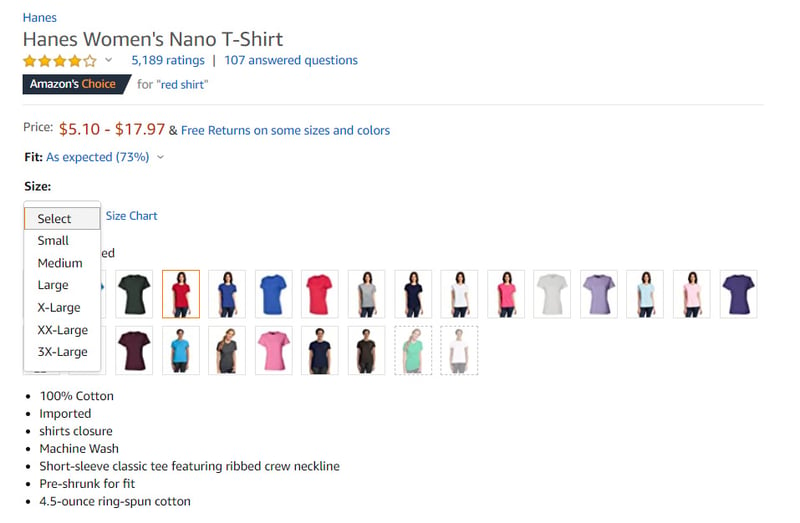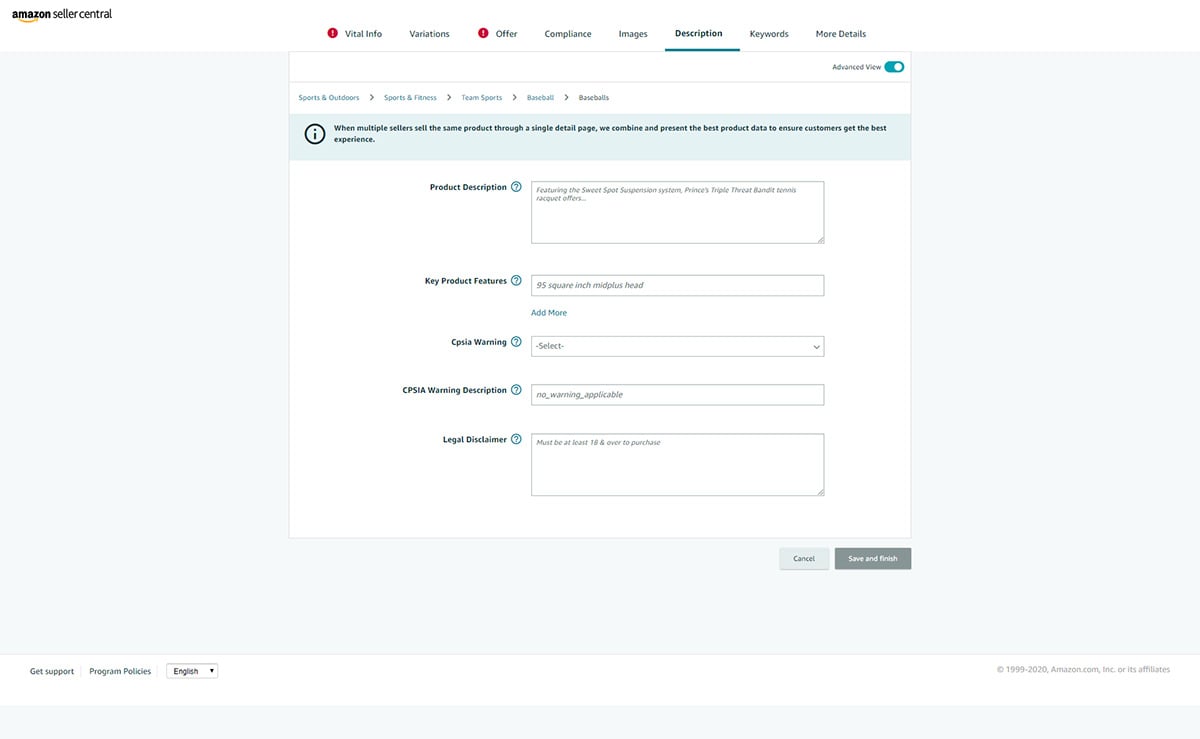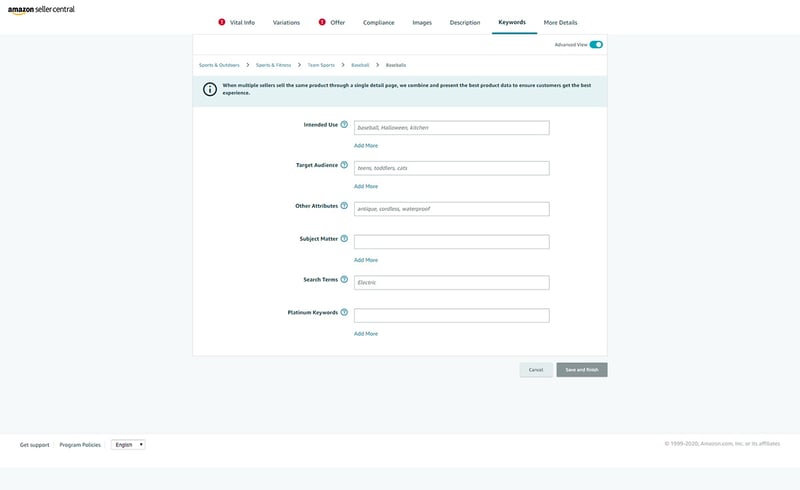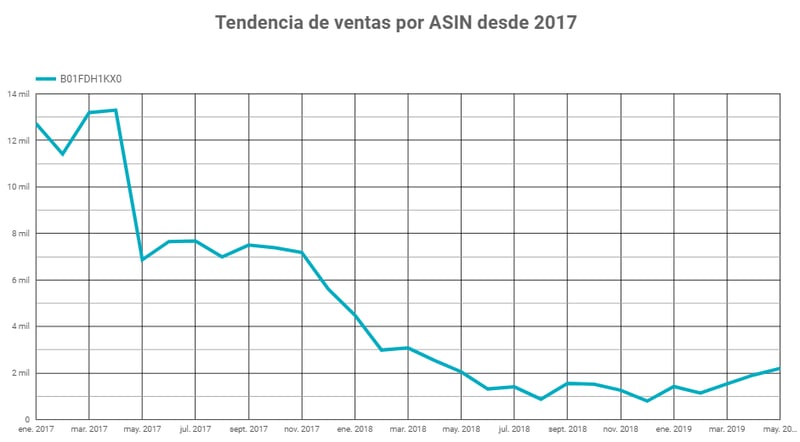Originally published on May 6, 2020, updated January 20, 2025
Menu
Join Our Email List
- Receive our monthly newsletter.
- Stay up to date on Amazon policies.
- Get tips to grow your business.
In this guest post, Victor García shares his insights about Amazon SEO and the A9 algorithm.
One of the most important things to consider when selling on Amazon is the SEO positioning of products within the platform. To manage this in the most effective way, Amazon has developed its own algorithm that is responsible for choosing which products to display based on the quality and search intention of the user.
This is called the "A9 Algorithm." It is a set of rules and commands that have been developed in order to provide the best results in the internal searches performed, by customers, on the Amazon search engine.
The objective of this algorithm is to show the results that are most in line with a given user's search intention, as well as to better, or worse, position the products that sellers put on sale on the platform.
Therefore, one can draw the conclusion that to get your products to get more sales, they should appear for as many search intentions as possible and the higher, the better.
In order to achieve our goal more effectively, we must know how this algorithm works, and know what it rewards as well as what it punishes.
The biggest mistake sellers make with SEO on Amazon is to think that positioning only depends on things you can improve or create in your products on Amazon, such as getting reviews.
But this is not the case. Amazon not only takes into account your product to position it in one place or another, but it also takes into account how the user responds and interacts with your product.
Furthermore, it is also important to note that an algorithm, not a human, will decide the position of your product.
So, sometimes, we carry out actions that we believe should have a positive impact, based on human thinking. But in practice, the algorithm mixes so many variables that such actions may not have the desired impact.
Here's an example: thinking that investing more in advertising on Amazon can make our organic positioning better, since our product will receive many more clicks when it reaches more people.
But if the advertising campaign is poorly done and we only get clicks, but no sales, Amazon's A9 algorithm understands that the user is not having the "logical and normal" experience from their point of view.
Thus, this set of rules may interpret that the product is not of sufficient quality or does not meet the needs of customers and, therefore, the SEO positioning may decrease.
That is, in this case, we can see that Amazon is more interested in the so-called sales click-through rate (number of sales / number of visits to the product), than the number of clicks or visits to your product.
Related reading: Unlock the Power of ChatGPT to Supercharge Your Amazon Sales
Nobody knows exactly how the algorithm is developed, but from analysis it has been possible to identify that the factors to position products on Amazon can be divided in three big categories:
Let's look at the most important points included in each of these categories:
The most important thing for the A9 Algorithm is that customers are happy and satisfied. And this is measured mainly by analyzing these points:
Negative feedback: Sellers with negative feedback are not tracked or are tracked less frequently.
Order processing speed: How long does it take from the time a customer buys a product until it arrives? Sellers who use FBA or Amazon Logistics services have better positioning and earn the BuyBox more easily than sellers who fulfill shipments themselves due to faster fulfillment. Amazon Prime fulfills orders much faster and the A9 Algorithm gives it more importance.
Inventory rate: This is how often you run out of stock of your products. Amazon doesn't want you to put a product on sale and then run out of stock for a month until you replace it. It identifies this as poor management by the seller and therefore poor customer service.
Percentage of perfect order (POP): POP is an average of the efficiency that encompasses all the factors that come into play during the entire process of an order, including speed of delivery, satisfactory deliveries, returns, and quality of the shipment.
Defective order rates: Customer satisfaction is vital to Amazon and order failures penalize the seller heavily. This rate is the opposite of POP and includes factors such as:
Output rate of your product page: If many users arrive at your product page and leave Amazon after seeing it, the A9 Algorithm considers that your product page is not of good quality. Having an above average Output Rate will hurt you.
Those are the highlights and, as you can see, even though we said that the A9 Algorithm is the key to SEO on Amazon for your products, it turns out that the most known factors for SEO on Google such as content creation or keyword studies have not come into play yet.
The second thing that the Amazon algorithm looks for is to ensure that users convert quickly and successfully. A strong conversion rate shows that a product is beneficial for customers, but it is also important for Amazon.
The most important points taken into account for Amazon product positioning are:
Sales ranking: Amazon ranks the products with the highest number of sales in its search results. For this reason, if you have a low quality product or a badly optimized product listing that is not focused on the needs your product covers, sooner or later the positioning of the product will fall.
Customer opinions: Even if you have a good product and a strong listing, you need to have a proper strategy to get quality ratings to help your product reach its full potential. Positive ratings are vital and really help a lot with product positioning, but you should NOT start building your house from the roof down.
Questions answered: Each product has a public section of questions. Customers can write their questions to get more information before buying a product. This is highly valued at Amazon because it is proactive customer service on their site and because if many customers participate in answering the questions, it means that people are devoted to that product.
The size and quality of the images: Amazon is quite strict with the quality of product images and has generated very clear guidelines on how they should appear. It is vital to have very good quality images because it is the basis of any sales website.
The price: Amazon wants people to find the best products at the best prices on its platform, but we don't think that's so relevant. For example, two different sellers can sell a cheaply made or a high quality product for the same keyword or search intention. By analyzing the results that appear on Amazon, you cannot see a pattern that shows cheaper products ALWAYS in better positions.
In fact, our specialized agency in Amazon Spain set up a company that sells products for 13.99€. Competitors have priced their items at 2€ – 5€, but our company has a higher position.
Don't force yourself to sell cheaply on Amazon. You don't get more sales that way.
Products with variants: This, it seems, is very much to Amazon's liking. It's about one of your products showing multiple variants (size, color, size, etc.). This improves the average time spent on your page since users will spend more time on your product detail page looking at the different variants you have. In addition, it is like selling multiple products from the same page and the ratings of all of the products are combined, giving you better positioning.

For this product you can see the sections of Color and Size. Having multiple options like this improves your SEO positioning, in addition to the advantages mentioned above.
Time on the page and bounce rate: The average time users spend on your product page and the number of times someone enters your product detail page and instantly returns to the search page are factors that indicate the quality of your products to the Amazon algorithm. For this reason, you should be very careful when sending traffic to Amazon.
This is the point at which you will be able to directly influence all the factors mentioned with actions that you can do on your product page.
But before we comment on them, we will mention the importance of doing proper keyword research for Amazon. This will give you the option to display your products by the true search intention for your product.
Trying to rank for high-volume search keywords, based on the premise that the more people search, the more they will see your product and the more they will buy from you, is a big mistake.
If your product appears with keywords that do not have a good relation with the needs it should cover, you may receive more visits, but you will not get better percentages of Sales per Visit.
Once the keyword research has been carried out, the following points must be optimized:


Understanding how the A9 algorithm operates is not an easy task. Sometimes we expect that we simply have to follow concrete and clear points that we can do without difficulty. That is, many people are looking for a checklist that will make us billionaires. But this does not exist.
Understanding our user and finding the most ideal, original, and impressive way to reach them is the key.
Many sellers think that the only way to get into the Amazon top three is by having many reviews. That vision, technically speaking, is far from reality.
SEO positioning on Amazon does not depend on a single variable. It depends on many.
Here are the main errors we see sellers making:
The A9 algorithm is smart and powerful enough to select information from your product listing and position you based on hundreds of user search intentions.
Identify multiple terms that users use to search for the same product in your keyword research. Then strategically place these keywords from the most important and relevant to the least important in your product listing.
You should know that the A9 algorithm takes words from the product's title and bullet points and, with them, makes multiple combinations to display your product. So you should NOT repeat the same keyword twenty times to get a better position, as long as it appears once.
In addition to using these keywords in your title and your bullet points, the keywords should be placed in the internal keyword area of your product sheet, which is hidden from users.
Remember that you have up to 250 characters, counting spaces, to fill in the Search Terms section. Use them all.
Whether you are just getting started on Amazon, launching a new product, or optimizing your current listings, you need to make data-driven decisions based on keyword research. Use keywords to create a title, bullet points, and other listing content that gets results.
Product positioning is very volatile in relation to search results. This is due to the constant updating of Amazon's algorithm and the frequent change of positions due to advertising on Amazon.
In addition, a change in user consumption habits can make your product, which is very well positioned, stop being so interesting. In this case, daily and weekly sales speed will fall and it will be overtaken by other products.
Here’s an example: A customer had a spirulina product in the top position for the most important search intentions two years ago. What happened is that there was a change in the consumption habits of the users and they started to be interested, progressively, in organic and natural spirulina.
His wasn't.
Now, a product that invoiced thousands of euros, is not only being removed from inventory, but also generated numerous stock problems because the client, seeing the good results in 2017, decided to buy thousands of units...which were then not sold.

Here you can see the trend of the ASIN: an agonizing and announced death since May 2017, of a product with more than 100 ratings and an average of 4.2 stars.
Of course, getting reviews helps to position your products on Amazon. But it is NOT linear: "If my competitor has 20 reviews, I'll get 40 and thus surpass them all.”
Wrong.
In fact, you can enter any product category or specific type of product and see if the products appear in order of ratings.
In general, products with more ratings are in the top three search results, but there are thousands and thousands of cases in which, if you take a look at the results from four to fifteen, you will see that you will find products in the fifth position has less ratings than some that are in position ten or fifteen.
In conclusion, SEO positioning on Amazon is a difficult task and you should not make the mistakes mentioned above. It is not a matter of luck, of hitting the nail on the head, or of simply getting more reviews.
You need to understand Amazon's A9 algorithm to see how you can achieve a better user experience and better satisfy the search intentions of the Internet users.
Originally published on May 6, 2020, updated January 20, 2025
This post is accurate as of the date of publication. Some features and information may have changed due to product updates or Amazon policy changes.
These Stories on Amazon
14321 Winter Breeze Drive
Suite 121 Midlothian, VA 23113
Call us: 800-757-6840





Copyright© 2007-2025 eComEngine, LLC. All Rights Reserved. eComEngine®, FeedbackFive®, RestockPro®, and SellerPulse® are trademarks or registered trademarks of eComEngine, LLC. Amazon's trademark is used under license from Amazon.com, Inc. or its affiliates.
No Comments Yet
Let us know what you think